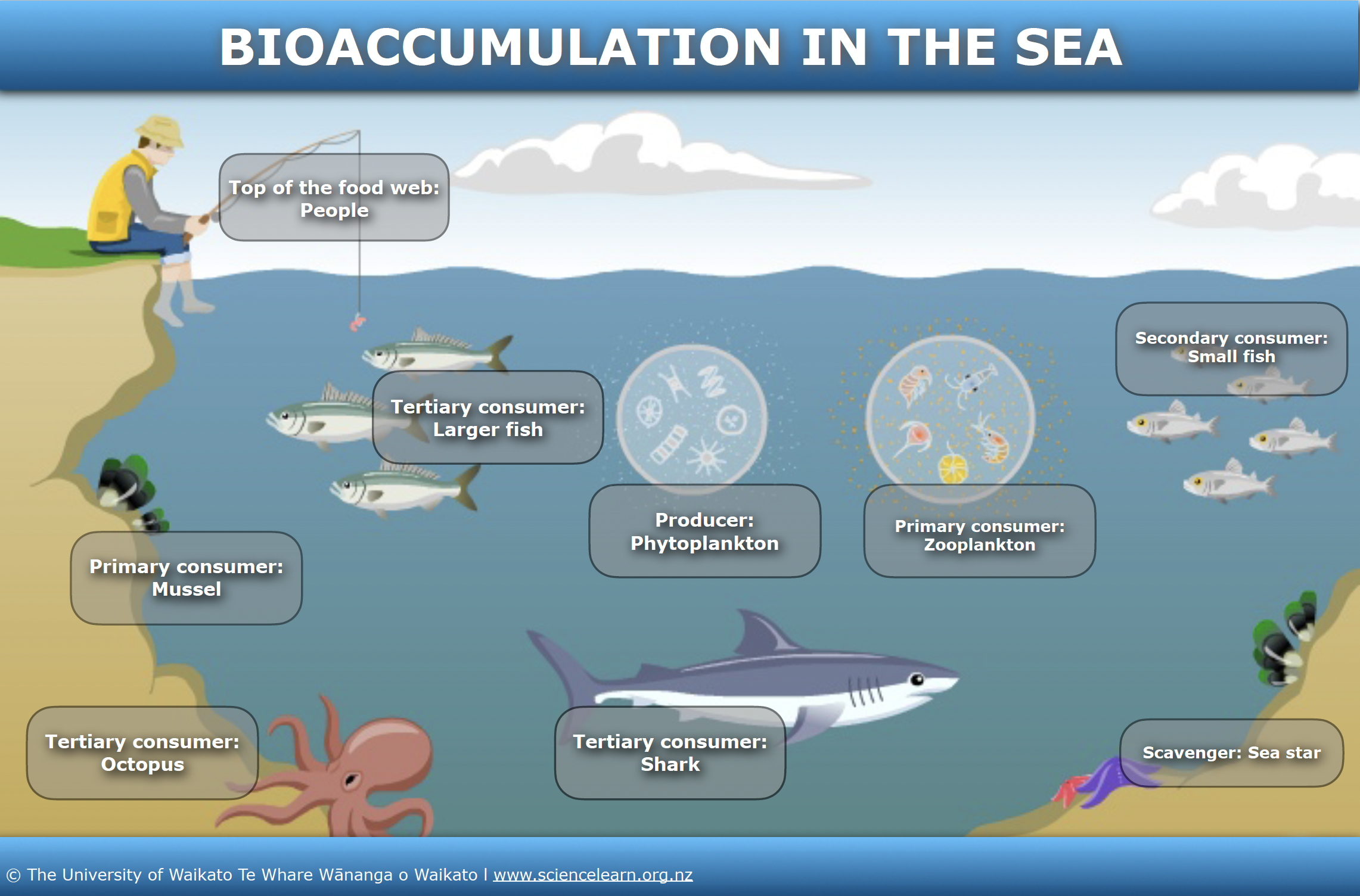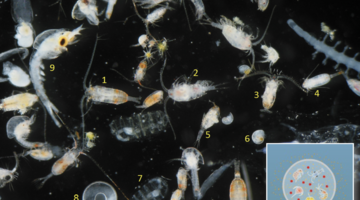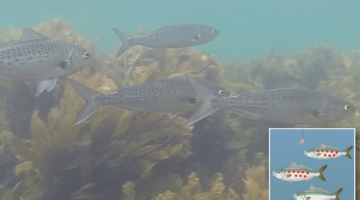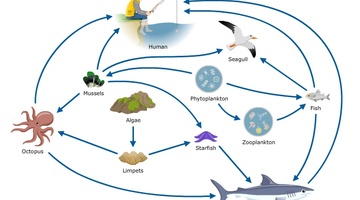This interactive demonstrates bioaccumulation of marine toxins. It shows how toxins move through a marine food web.

Marine toxins, produced by phytoplankton, can accumulate in organisms in the food web. This process is called bioaccumulation. This interactive demonstrates one way toxins can accumulate. Ultimately, they can be passed on to people who can become very ill and even die from different types of seafood toxins.
To use this interactive, move your mouse or finger over any of the labelled boxes and select to obtain more information.
Begin with the phytoplankton that are producing toxins. The red dots are toxins. Move through the food web: primary consumers to secondary consumers to tertiary consumers and the top of the food web. Watch to see how the toxins accumulate as you follow a food chain. Try another food chain, beginning with the toxin-producing phytoplankton. Information about how toxins move through the marine food web is in the article Toxins and food webs.
Transcript
Top of the food web: People
People are at the top of the food web. They can get very sick eating fish or seafood that contains high levels of toxins through bioaccumulation.
Primary consumer: Mussel
Mussels are generally considered primary consumers. They feed on microscopic plants. Toxins can be ingested.
Tertiary consumer: Larger fish
Larger fish – such as kahawai – eat other consumers. Some may ingest the increasing amounts of toxins.
Producer: Phytoplankton
Phytoplankton are producers, they make food through a process of photosynthesis. Some phytoplankton produce toxins.
Primary consumer: Zooplankton
Zooplankton are plant eaters (herbivores) that eat phytoplankton. Some will ingest toxins from the phytoplankton.
Identification/common taxa key of the zooplankton in the image: 1: Calanidae, 2: Temora stylifera, 3: Calocalanus, 4: Clausocalanus, 5: Oncaeidae, 6: gastropod larva, 7: doliolid, 8: fish egg, 9: decapod larva.
Secondary consumer: Small fish
Small fish – such as yellow-eye mullet – are consumers that eat primary consumers. Some will ingest the toxins from the primary consumers.
Tertiary consumer: Octopus
An octopus is a carnivore eating mostly bivalves such as mussels. They will also eat crabs, shrimp, snails and small fish. Toxins can be ingested.
Tertiary consumer: Shark
Sharks eat other consumers. Sharks, in particular, are known to bioaccumulate high levels of toxins.
Scavenger: Sea star
Sea stars eat both plants and animals, dead or alive. Mostly they eat mussels and other molluscs. They can ingest toxins.




